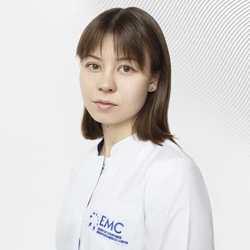Rehabilitation after hip replacement
Rehabilitation measures after hip replacement are extremely important for the successful restoration of the patient's habitual household and athletic activity. The EMC clinic uses a comprehensive European approach for postoperative recovery, which combines the possibilities of physical therapy, physiotherapy and manual techniques.
Hip replacement: general information
Endoprosthetics is one of the most common operations that involves replacing a damaged joint with an artificial implant. Surgical intervention is performed in cases where conservative treatment is ineffective. Among the indications for surgery:
-
primary coxarthrosis (deforming osteoarthritis);
-
post-traumatic coxarthrosis;
-
rheumatoid arthritis (coxitis);
-
necrosis of the femoral head (aseptic or avascular necrosis);
-
femoral neck fracture in old age;
-
TBS dysplasia.
The type of joint replacement surgery depends on the degree of its damage. In total surgery, the endoprosthesis replaces both the head of the bone and the cavity in which it is placed. Such surgical intervention requires the highest qualification of the operating physician. With single—pole prosthetics, only a part of the joint is replaced - the femoral head.
At the EMC clinic, surgery is performed primarily using a minimally invasive method. Surgical intervention is performed through small incisions up to 6-7cm long, which reduces the risk of adverse events and shortens the time required to return to normal life.
Why is quality rehabilitation important?
A well-performed operation relieves the patient of pain and limited mobility associated with joint damage. However, complete recovery is impossible without a high-quality rehabilitation program. Compared with healthy people, patients who have undergone surgery may experience a lag in strength and functional indications, as well as gait disorders, even two years after the endoprosthesis.
High- quality rehabilitation helps patients to fully recover and return to habitual physical activity and work duties. The rehabilitation doctors at the EMC clinic use the most modern techniques and have developed sports-specific programs that not only restore the patient's ability to move independently and provide self-care, but also help to achieve high performance in sports activities.
Rehabilitation stages after TB replacement
Recovery after endoprosthetics is carried out in several stages. Rehabilitologists set new tasks for each of them and develop rehabilitation programs to achieve them.
On the day of the procedure
The primary task at this stage is to reduce joint swelling and pain. Cryotherapy (cooling) is used for this purpose. The operated leg is placed in an elevated position. An analgesia protocol is carried out, antithrombotic drugs are prescribed to prevent complications.
The second goal of doctors is to maintain blood circulation and stimulate tissue regeneration in the operated segment. For this, the minimum load is indicated within a few hours after the operation. Active bed movements are recommended for the patient, transitions from a bed to a chair and back, transition from a lying position to a sitting and standing position.
Hospital stay (2-5 days after surgery)
Doctors are starting to restore the range of motion in the operated limb. The EMC clinic uses passive manual mobilization for this purpose, as well as passive continuous mobilization of the hip joint. Passive exercises are performed by a special device that automatically develops mobility in the joint at a given amplitude, without pain or discomfort for the patient.
Physical activity is increased gradually. At the first stage, only isometric exercises are possible (contraction and relaxation of muscles without flexion of the joint). Then they are complemented by exercises for hip extension, heel sliding to the buttock, knee joint extension in the prone position, and heel lifting in the sitting position.
The most important task of this period is to restore the patient's ability to move independently. Walking with support (crutches or walkers) is trained from the second postoperative day under the supervision of a rehabilitologist, who trains the patient to step correctly on the operated leg, making sure that gait disorders do not form.
On average, a patient spends about a week in a hospital. During this time, he learns to walk on a flat surface, climb stairs, and perform basic household tasks.
Before discharge, the patient is introduced to the restrictions and precautions that must be followed in the next 2-3 months:
-
with anterior access, it is forbidden to lie on your stomach, rotate your hip outward, or extend it beyond the neutral position.;
-
with rear access, it is forbidden to bend the hip more than 90°, rotate the hip inwards, or cross the legs.
After being discharged home (2— 8 weeks)
To fully restore joint mobility, a special rehabilitation program is being developed, which the patient will follow over the next few months.
Initially, the physiotherapist visits the patient at home to teach basic skills at home (moving to a chair, toilet, taking a bath, putting on socks, etc.). Then the patient can attend classes at the rehabilitation center.
During this period, the following types of exercises may be prescribed:
-
stretching the muscles of the thigh and lower leg;
-
walking to the side;
-
squats on a high chair with support;
-
the gluteal bridge.
After 6 weeks, the patient is normally able to fully serve himself in everyday life, move with or without one crutch, and drive a car.
Final restoration (after 8 weeks)
The goal of the last stage is to fully restore strength and functional parameters, and return the patient to active life or sports. Exercises for balance and balance, strength exercises with a gradual increase in load, exercises with an open and closed kinematic chain are prescribed. Squats, deadlifts, alternating running and walking, etc. are possible.
Frequently asked questions
How long will I recover from hip replacement surgery?
The timing of full recovery after arthroplasty depends on the individual characteristics of the patient, his age and other factors. The patient will be able to return to work in about 6 weeks. In most cases, after 2-3 months, the patient fully restores his habitual daily activity and, after consultation with a rehabilitologist, can begin low-intensity sports training. Full—fledged rehabilitation can take up to six months, by which time the lameness completely disappears.
When can I step on my foot after hip surgery?
According to modern protocols for minimally invasive surgery, patients are advised to get up in the first postoperative hours. Starting from the second day, rehabilitation doctors begin to restore the patient's ability to support himself and train him to step on the operated leg with full load. Upon discharge from the hospital, the patient is usually able to walk up to 60 meters on a flat surface on his own.
How long will I have to walk on crutches after surgery?
The duration of use of crutches is set by the doctor depending on the patient's progress, the presence or absence of complications, and the effectiveness of rehabilitation measures. It usually takes up to 6 weeks to walk with support after hip replacement.
How long will your leg hurt after surgery?
In the early postoperative period, pain is a natural reaction of the body to a surgical injury. If you follow the doctor's recommendations, in most cases the pain syndrome is moderate. To improve the patient's condition, painkillers are prescribed for 48-72 hours. Uncomfortable sensations may persist for 2-3 weeks.
Is it possible to recover at home?
The patient spends the first 5-6 days after surgery in a hospital, where the first stage of rehabilitation takes place. A complex of therapeutic gymnastics is being developed for classes after discharge from home. Up to 6 weeks after surgery, the patient will visit a physiotherapist to monitor recovery and, if necessary, correct the program. If the patient responsibly follows the rehabilitation program developed for him and follows all the recommendations of the doctor, he will successfully recover at home.
The advantages of the Department of Rehabilitation and Restorative Medicine at the EMC Clinic are high qualifications and extensive professional experience, well—coordinated interaction between doctors and rehabilitologists, advanced equipment and simulators for active and passive rehabilitation. To learn more about our services and programs, please call +7 495 933-66-55.
Make an appointment for a consultation and we will contact you for more details
Why the EMC
The first and only clinic in Russia, created in the image of the world's leading clinics
EMC is a multidisciplinary center offering patients a high level of medical services and a personalized approach
Worldwide recognition and awards
 Learn more
Learn more
Worldwide recognition and awards
 Certificates and licenses
Certificates and licenses


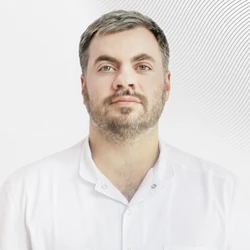

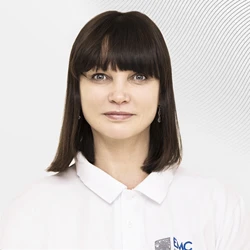

.webp)
.webp)
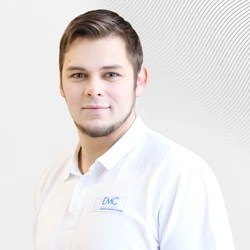
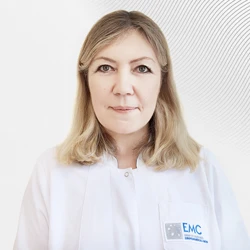
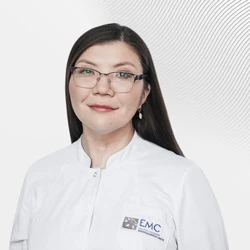
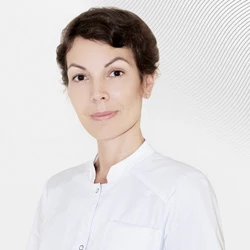

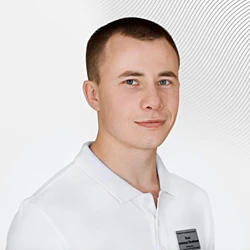

.webp)

.webp)
